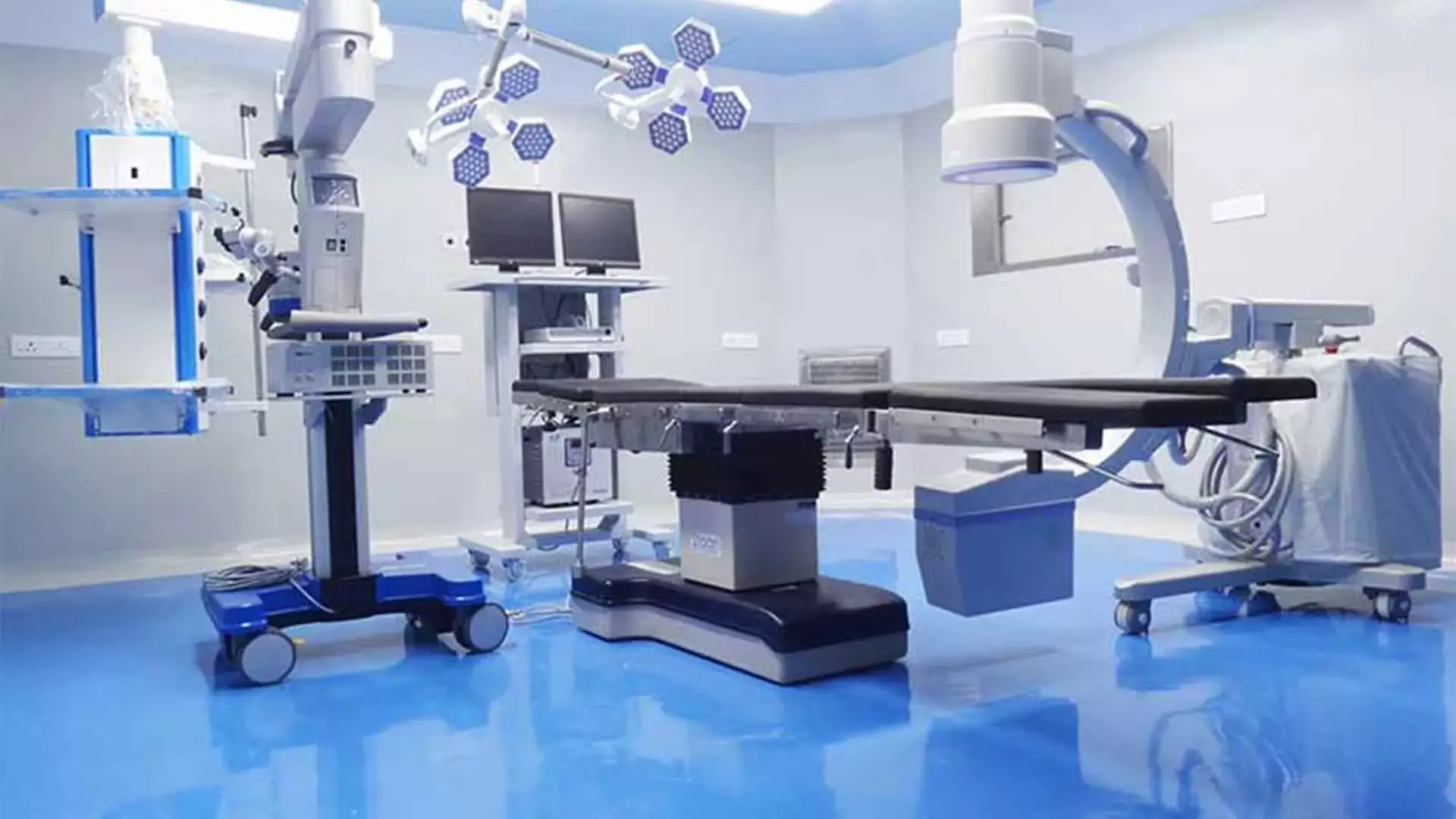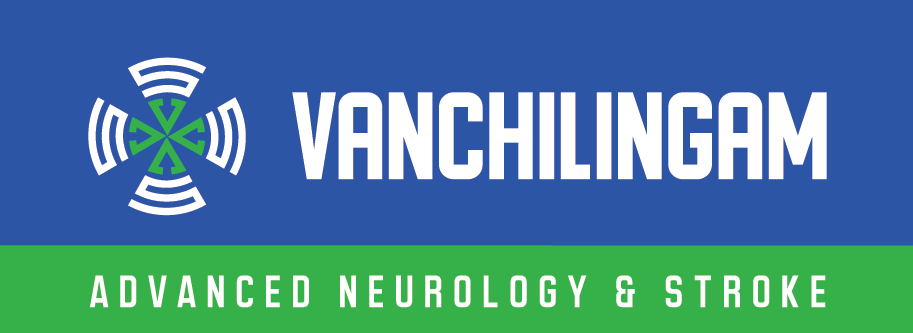Brain Aneurysm Treatment at affordable costs
All about Brain Aneurysm
At Vanchilingam Advanced Neurology and Stroke Care, our mission is to provide exceptional care, combining state-of-the-art methods with compassionate support when it comes to Aneurysm treatment. Here’s everything you need to know about brain aneurysms and how we can help.

What is a Brain Aneurysm?
In simple terms, a brain aneurysm is a weak spot in the wall of a blood vessel in the brain. Think of it like a balloon on a garden hose – over time, this weak area can bulge outwards due to the pressure of blood flowing through it.
While some aneurysms remain small and harmless, others can grow, posing serious risks. The most concerning complication is rupture, which can cause bleeding in the brain (known as a subarachnoid haemorrhage). This is a medical emergency that requires immediate attention.
Aneurysm Symptoms to Watch For:
- A sudden, severe headache (often described as the “worst headache of your life”)
- Loss of consciousness
- Seizures
- Eye pain
- Pain in face
- Weakness
- Loss of concentration
- Difficulty speaking
- Loss of balance
- Neck pain or stiffness
- Nausea and vomiting
- Sensitivity to light
Sometimes, unruptured aneurysms may not show any symptoms and are discovered during routine imaging for other conditions. Some aneurysms can grow large enough to touch on adjacent nerves and cause symptoms due to nerve compression like blurring/ double vision/ squint etc.
How is a Brain Aneurysm Treated?
At Vanchilingam Advanced Neurology and Stroke Care, we offer cutting-edge solutions based on the patient’s condition, ensuring the best possible outcomes. Treatment depends on factors like the size, location, and risk of rupture of the aneurysm, as well as the patient’s overall health.
Observation and Monitoring
For small, unruptured aneurysms, regular monitoring with imaging tests may be enough. We focus on reducing risks through lifestyle modifications and medical management, such as controlling blood pressure.
Endovascular Treatment
This minimally invasive procedure is often the first choice for many patients. Through a tiny pinhole, we insert a catheter into a blood vessel and navigate it to the aneurysm.
Options include:
- Coiling: Special coils are placed inside the aneurysm to promote clotting and prevent rupture.
- Flow Diversion: A stent-like device redirects blood flow away from the aneurysm, allowing it to heal naturally.
Surgical Clipping
For certain aneurysms, surgical clipping may be the best option. This involves placing a tiny clip at the base of the aneurysm to cut off blood flow, preventing rupture.
Emergency Management for Ruptured Aneurysms
In cases of rupture, immediate intervention is critical. We provide lifesaving care, stabilizing the patient and addressing the bleeding through advanced Neurosurgical or Endovascular techniques.
Why Are We the Aneurysm Treatment Specialists?
Brain Aneurysm rupture leads to Sub Arachnoid Haemorrhage (SAH). This could be a fatal disease if left untreated. At VANS our experts have vast experience in both Endovascular Coiling and Surgical Clipping, at affordable costs.
Expertise Tempered with Experience
Our team of highly skilled Neurologists and Neurosurgeons are proficient in their field, with extensive experience in diagnosing and treating brain aneurysms.
Advanced Technology
We utilize the latest imaging and treatment technologies, ensuring accurate diagnoses and effective interventions.
Comprehensive Care
From preventive measures and non-invasive treatments to complex surgical procedures, we offer a full spectrum of care suitable to each patient.
Patient-Centric Approach
At Vanchilingam, we prioritize your well-being. Our compassionate team ensures you’re informed and comfortable every step of the way, creating a supportive environment for healing.
24/7 Emergency Services
A ruptured aneurysm is a medical emergency, and time is critical. Our round-the-clock stroke and Neuro-critical care team is always ready to provide immediate, expert care.
Take the First Step Toward Better Brain Health
If you or a loved one has been diagnosed with a brain aneurysm or is experiencing concerning symptoms, don’t wait. Trust the experts at Vanchilingam Advanced Neurology and Stroke Care to provide the best in diagnosis, treatment, and recovery.
Your brain is precious – let us help you protect it. Contact us today to schedule a consultation.
Meet the Specialists
Our team of dedicated specialists brings years of expertise and a passion for delivering personalized care.
Real Experiences, Real Results
Discover how Dr. Vanchilingam Advanced Neuro & Stroke Hospital has transformed the lives of our patients. Also hear our specialists talk about the services and solutions we offer for various neurological issues.





OUR SPECIALITY
Acute Stroke Unit
The Acute Stroke Unit is an acute neurological ward providing specialist services for people who have had a new suspected stroke. On the Acute Stroke Unit we provide: Thrombolysis treatment -treatment is started in the Emergency Department and you will have the rest of your Treatment and monitoring on the Acute Stroke Unit
OUR SPECIALITY
Advanced Neuro ICU
A neuro ICU is an Intensive Care Unit which is particularly devoted to a high – quality care of patients with the neurological problems that are life-threatening in nature. The neuro ICU of our hospital is a complete state of the art and a full-fledged one designed to provide almost all sorts of advanced neurological care to the normal patients as well as the patients in the emergency.
OUR SPECIALITY
Advanced Neuro Imaging
Our radiology department is a state of the art department with all the necessary infrastructure that is essential for effectively dealing with the neuro and neurosurgery emergencies at its best. The advanced neuroimaging techniques used by our doctors are as discussed below.
OUR SPECIALITY
Neuro interventional Cath Lab
A neuro-interventional Cath lab in a neurodiagnostic Centre is a specialized catheterization laboratory which has all the necessary diagnostic imaging equipment that is particularly used for the purpose of visualization of the arteries, veins and other vascular malformations of the brain and spinal cord.
OUR SPECIALITY
Neuro-Surgery Operating Room
The neurosurgery operating room of Dr.Vanchilingam Hospital, Neurosurgery Hospital is a fully functional and a state of art one that has the adequate infrastructure for effectively carrying out even the most complicated neuro surgeries with ease.
What is a brain aneurysm?
A brain aneurysm is a weak spot in the wall of a blood vessel in the brain that can bulge outward like a balloon. While some remain harmless, others can pose serious risks if they rupture, leading to a subarachnoid haemorrhage, a life-threatening condition.
What are the symptoms of a brain aneurysm?
Symptoms can vary based on whether the aneurysm is ruptured or unruptured:
- Unruptured aneurysms: May cause eye pain, blurred or double vision, facial pain, or nerve compression symptoms. Sometimes, there are no symptoms at all and they are discovered during imaging tests.
- Ruptured aneurysms: Sudden severe headache (often called the “worst headache of your life”), loss of consciousness, seizures, nausea, neck stiffness, or sensitivity to light.
What should I do if I experience the “worst headache of my life”?
A sudden, severe headache described as the “worst headache of your life” could indicate a ruptured brain aneurysm, which is a medical emergency.
- Immediately contact our Emergency Number 89399 98108, or
- Rush to Vanchilingam Advanced Neurology and Stroke Care for urgent medical attention. Our 24/7 emergency team is always ready to provide lifesaving care.
How are brain aneurysms diagnosed?
Brain aneurysms are often detected through imaging tests such as CT scans, MRI scans, or angiograms. These tests provide detailed images of blood vessels, helping to identify aneurysms and assess their risk of rupture.
What treatments are available for brain aneurysms?
Treatment options depend on the aneurysm’s size, location, and rupture risk:
- Observation and monitoring for small, unruptured aneurysms.
- Endovascular treatment, including coiling and flow diversion, to block blood flow to the aneurysm.
- Surgical clipping to isolate the aneurysm from blood circulation.
- Emergency interventions for ruptured aneurysms, combining advanced surgical or endovascular techniques.
Why choose Vanchilingam Advanced Neurology and Stroke Care for brain aneurysm treatment?
We provide personalized care using advanced technology at affordable costs. Our team includes highly experienced neurologists and neurosurgeons specializing in aneurysm treatments like endovascular coiling and surgical clipping. Our 24/7 emergency services ensure immediate attention for ruptured aneurysms.
Can brain aneurysms be prevented?
While not all aneurysms are preventable, lifestyle changes such as controlling blood pressure, avoiding smoking, and managing stress can reduce risk. Regular health check-ups and imaging tests can help detect aneurysms early.
What should I do in case of a suspected brain aneurysm rupture?
A ruptured aneurysm is a medical emergency. Seek immediate medical attention. At Vanchilingam Advanced Neurology and Stroke Care, our dedicated stroke ICU and neuro-critical care team are equipped to provide lifesaving interventions 24/7.
How does endovascular coiling work for treating aneurysms?
Endovascular coiling is a minimally invasive procedure where a catheter is inserted into the blood vessel, and tiny coils are placed inside the aneurysm. These coils promote clotting, which prevents rupture and stabilizes the aneurysm.
Is brain aneurysm treatment painful?
Minimally invasive procedures like endovascular coiling typically involve less pain and quicker recovery compared to traditional surgery. Our team ensures that patients are comfortable and supported throughout their treatment journey.
How can I schedule a consultation at Vanchilingam Advanced Neurology and Stroke Care?
You can contact us through our website or call us to book a consultation. Early diagnosis and treatment can make a significant difference in outcomes.











